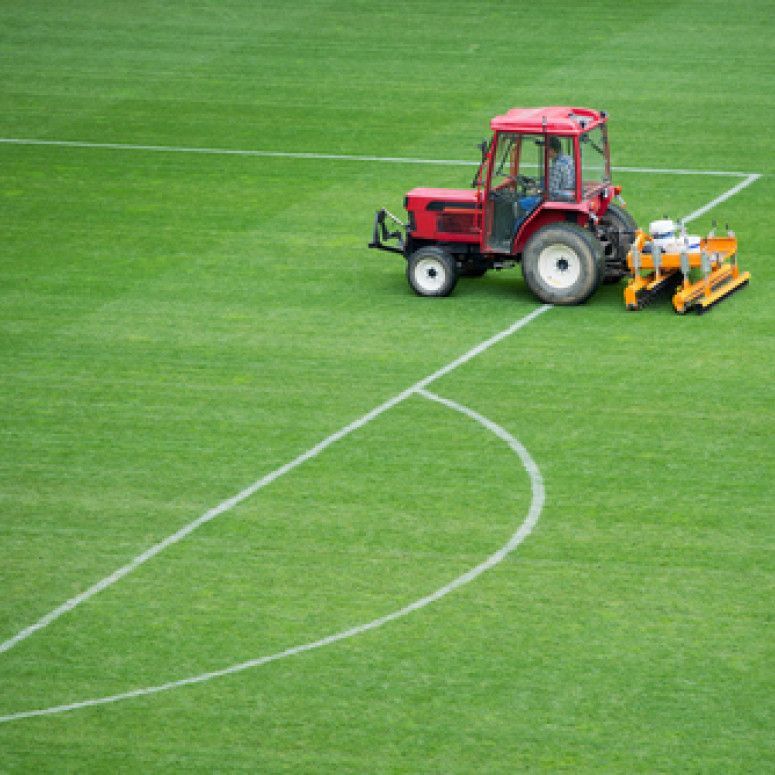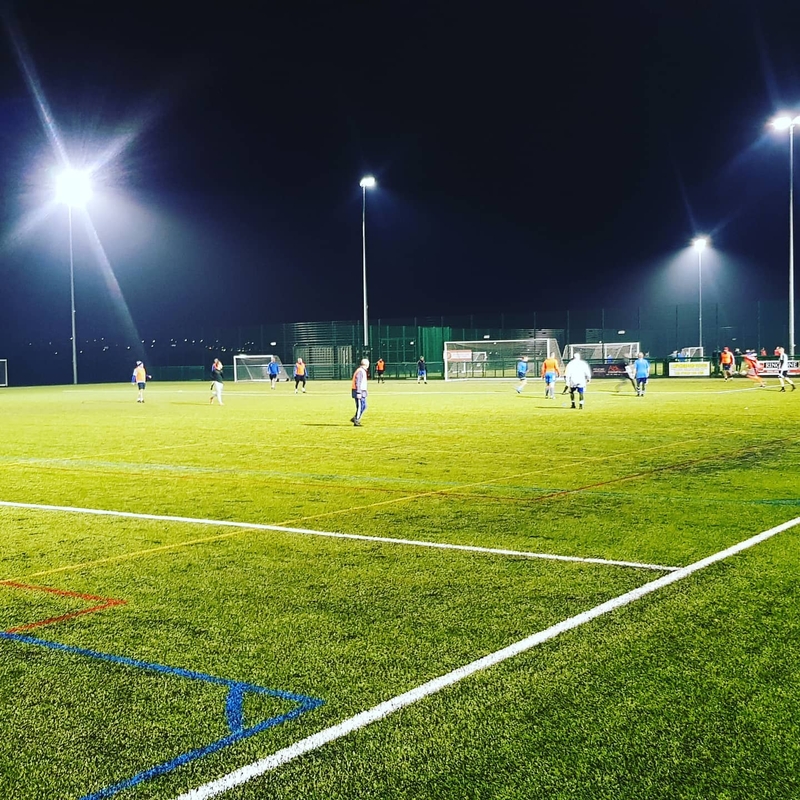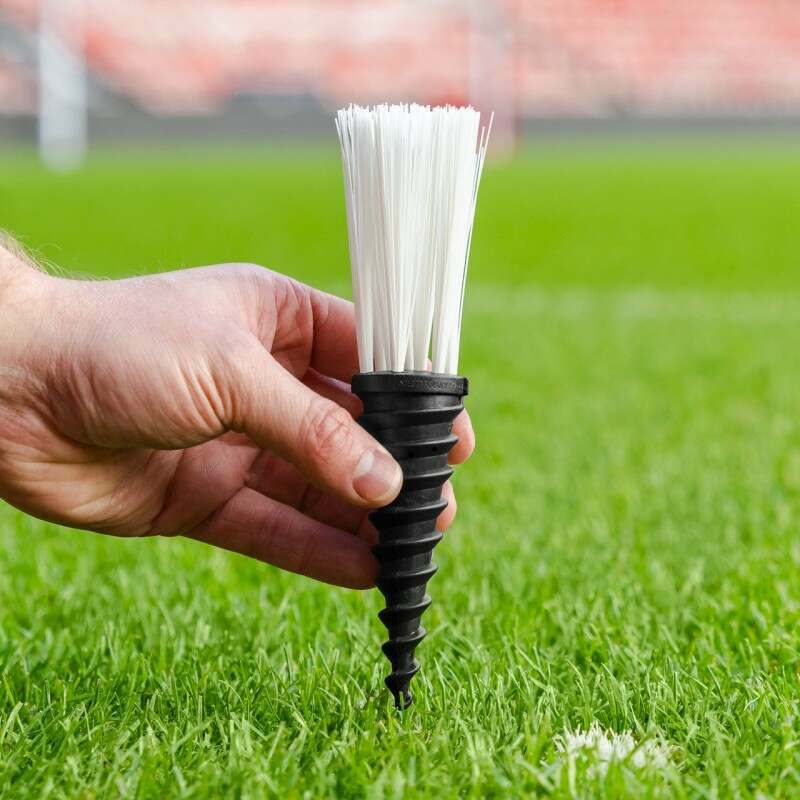I. Introduction

A. Definition and Purpose of a Football Pitch
The football pitch, also known as a soccer field in some regions, is the playing surface for the sport of football. It is a rectangular field with goalposts at each end where two teams compete to score goals by kicking a ball into the opposing team’s goal. The purpose of the football pitch is to provide a regulated and standardized playing surface for the game, ensuring fair play and equal opportunities for all teams.
B. Importance of the Pitch in Football
The football pitch is of utmost importance in the sport of football. It serves as the stage for players to showcase their skills, teamwork, and strategy. The quality and condition of the pitch can significantly impact the game and its outcomes. A well-maintained pitch provides a conducive environment for players to perform at their best, while a poorly maintained pitch can lead to injuries and hinder the flow of the game.
II. Dimensions and Markings
A. Standard Measurements of a Football Pitch
According to the Laws of the Game set by the International Football Association Board (IFAB), the standard measurements of a football pitch are defined as 100-110 meters in length and 64-75 meters in width for international matches. For other matches, the length can be 90-120 meters and the width 45-90 meters. These measurements ensure a consistent and regulated playing surface for football matches across different levels and competitions.
B. Key Markings on a Football Pitch
The football pitch is marked with various key lines and markings to delineate different areas of the field. These include the halfway line, penalty areas, goal areas, center circle, corner arcs, and the penalty spot. These markings are essential for referees, players, and spectators to understand the boundaries and rules of the game.
C. Variations in Pitch Sizes and Layouts
While there are standard measurements for a football pitch, variations in pitch sizes and layouts do exist. Some pitches may be slightly larger or smaller due to space constraints or specific regulations of a particular league or competition. Additionally, the layout of the pitch, such as the placement of advertising boards and technical areas, can vary based on the regulations and preferences of the organizing authority.
III. Surface and Conditions
A. Types of Surfaces used in Football Pitches
Football pitches can be constructed using various types of surfaces, including natural grass, artificial turf, and hybrid systems. Each surface has its own advantages and considerations, such as maintenance requirements, durability, and playability. The choice of surface often depends on factors such as climate, budget, and the intended frequency of use.
B. Maintenance and Preparation of Football Pitches
Maintenance of a football pitch is crucial to ensure optimal playing conditions and player safety. This includes regular mowing, watering, fertilization, and aeration for natural grass pitches, as well as grooming, infill replenishment, and repairs for artificial turf pitches. Additionally, pitch preparation before matches involves marking out lines, ensuring goalpost stability, and inspecting the surface for any hazards.
C. Impact of Weather Conditions on the Pitch
Weather conditions, such as rain, snow, and extreme temperatures, can have a significant impact on the football pitch. Heavy rain can result in waterlogging, making the surface unplayable, while snow and ice can pose safety hazards. Extreme heat can also affect the quality of natural grass pitches. Groundskeepers and pitch maintenance staff must be prepared to mitigate these effects and ensure the pitch remains suitable for play.
IV. Technical Areas and Goal Areas
A. Role and Regulations of Technical Areas
The technical area on a football pitch is where the managers and coaching staff are stationed during the game. It serves as a designated space for them to give instructions to players and make tactical decisions. However, there are strict regulations governing the use of the technical area, including rules on behavior and conduct. Coaches and staff must remain within the confines of the technical area and are not allowed to encroach onto the pitch during the game.
B. Importance and Function of Goal Areas
The goal areas, also known as the penalty areas, are perhaps the most crucial zones on the football pitch. They are the areas where fouls and violations can result in penalty kicks or free kicks, and where the goalkeeper has special privileges and responsibilities. The goal areas are heavily regulated, and any infringement can lead to crucial decisions that impact the outcome of the game.
C. Rules Governing Goalkeeper’s Use of the Area
The goalkeeper is the last line of defense on the football pitch, and the goal area is their domain. They have certain privileges within this area, such as being able to handle the ball with their hands, but they also have specific rules to follow. For example, they must release the ball within six seconds of receiving it, and they must not hold onto the ball for an excessive amount of time. These rules ensure fair play and maintain the flow of the game.
V. Spectator Stands and Surroundings
A. Overview of Stadium Seating and Spectator Stands
The spectacle of a football match is not confined to the pitch; it also encompasses the stands and seating areas. Stadiums are designed to provide optimal viewing experiences for fans, with various types of seating arrangements and amenities. The atmosphere and energy in the stands can have a significant impact on the players and the game itself.
B. Facilities Surrounding the Football Pitch
The surroundings of a football pitch are just as important as the pitch itself. Facilities such as locker rooms, medical rooms, and media areas are vital for the smooth operation of a game. Additionally, amenities for spectators, such as concessions and restrooms, contribute to the overall experience of attending a football match.
C. Influence of the Stadium Atmosphere on the Game
The stadium atmosphere can play a significant role in influencing the outcome of a game. The energy and support from the fans can boost the morale of the players and create an intimidating environment for the opposing team. Conversely, a lack of support or negative atmosphere can have adverse effects. Therefore, stadium surroundings and the atmosphere they create are integral to the game of football.
VI. Evolution and Innovations

A. Historical Evolution of Football Pitches
The design and construction of football pitches have evolved significantly over the years. From simple grass fields to advanced synthetic surfaces, the evolution of football pitches reflects advancements in technology and a focus on enhancing playing conditions for players.
B. Technological Advancements in Pitch Construction
Modern football pitches incorporate state-of-the-art technology and materials to ensure durability, performance, and safety. Artificial turf, hybrid grass systems, and advanced irrigation and drainage systems are just a few examples of the technological advancements in pitch construction. These innovations have revolutionized the way football pitches are created and maintained.
C. Future Trends and Innovations in Football Pitches
Looking ahead, the future of football pitches is likely to see continued innovation and advancements. From sustainable and environmentally friendly materials to smart technology that monitors and maintains pitch conditions, the possibilities are endless. The focus will be on creating pitches that offer optimal playing surfaces while minimizing environmental impact.
In conclusion, the football pitch is a multi-faceted and dynamic entity that goes beyond just the playing surface. It encompasses technical and goal areas, as well as spectator stands and surroundings, all of which contribute to the overall experience of the game. Furthermore, the evolution and innovations in football pitches reflect a dedication to improving the game and the conditions in which it is played. As the sport continues to evolve, so too will the football pitch, ensuring that the beautiful game is played on the best possible stage.



